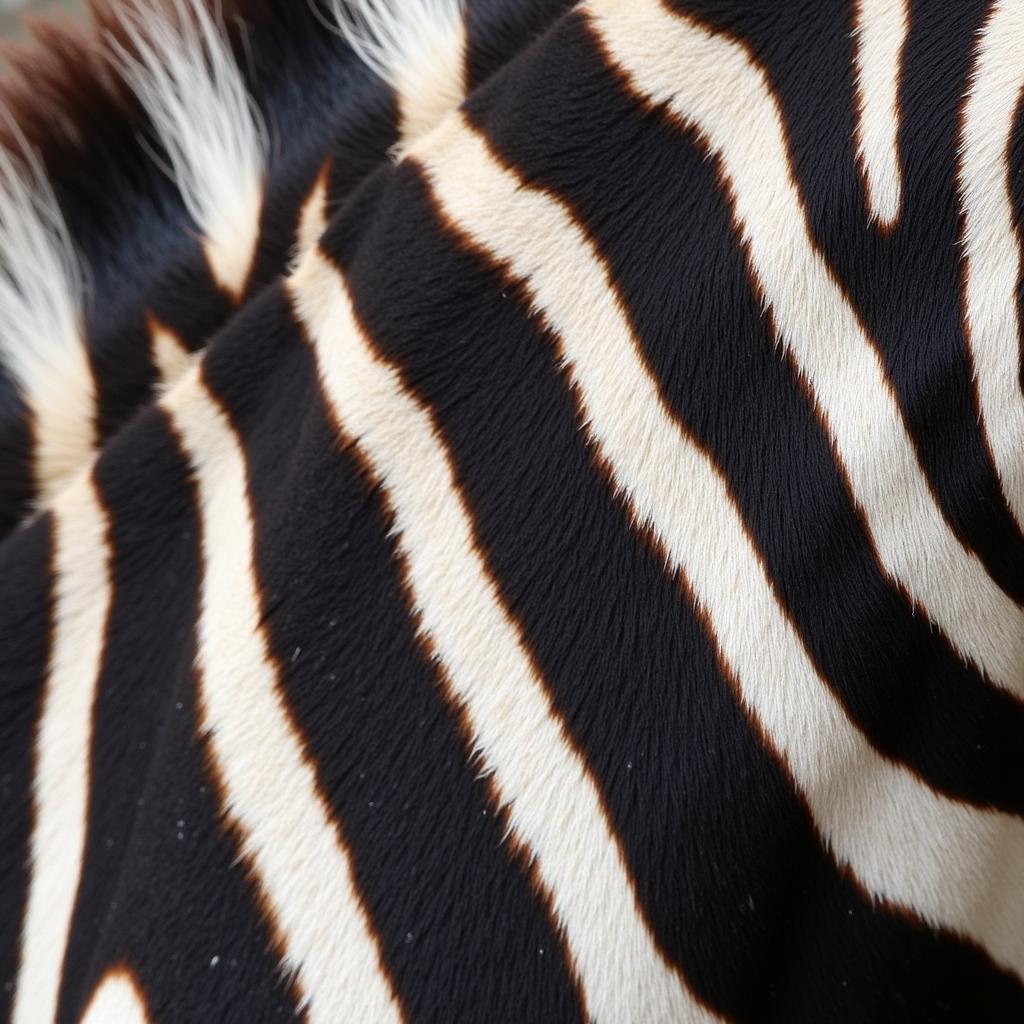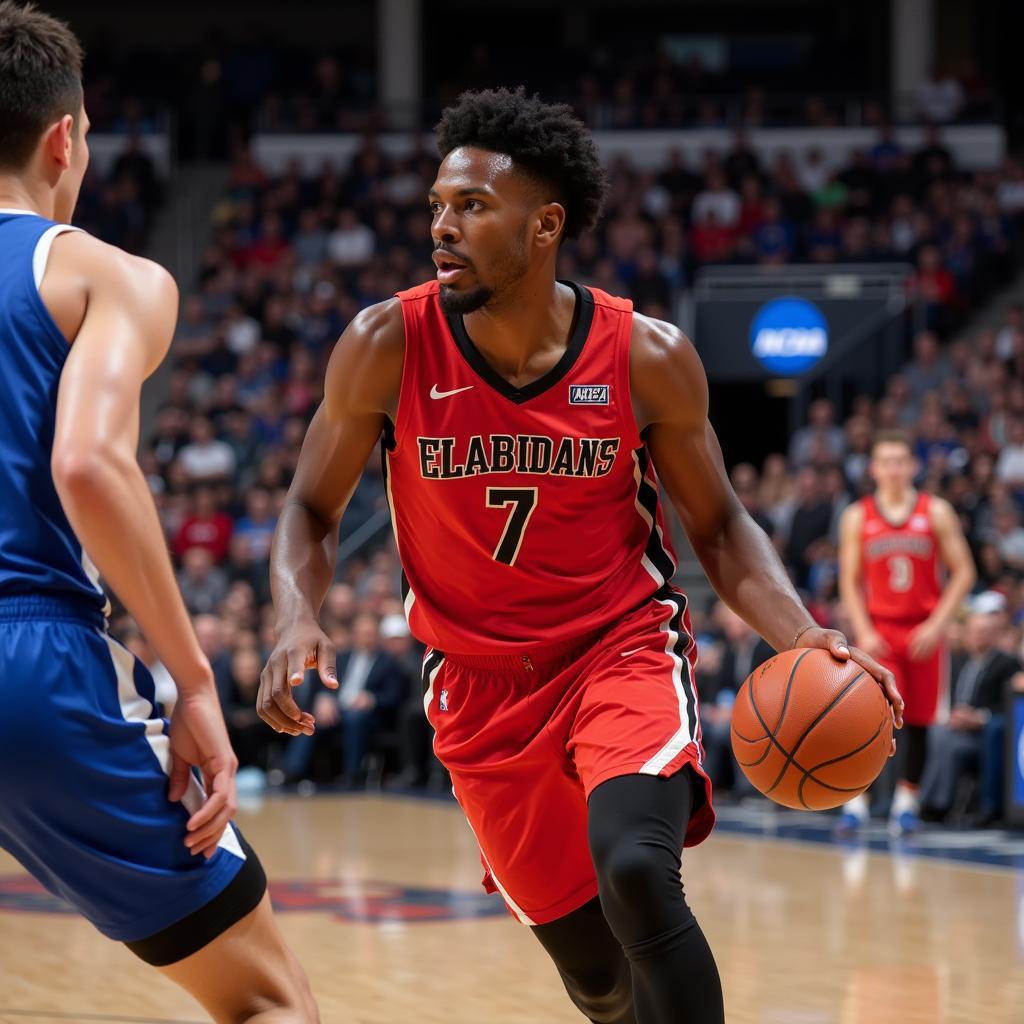African Buffalo Facts: Majestic Bovines of the Savanna
The African buffalo, scientifically known as Syncerus caffer, is a powerful and iconic herbivore found throughout sub-Saharan Africa. These large bovines are a familiar sight on safaris, often seen grazing in massive herds or wallowing in mud. But there’s more to these creatures than meets the eye. Let’s dive into some fascinating African Buffalo Facts that reveal their unique biology, social behavior, and crucial role in the ecosystem.
A Formidable Presence: Size and Appearance
African buffaloes are easily recognizable by their massive size and distinctive horns.
- Impressive Stature: Adult males, known as bulls, can reach up to 1.7 meters (5.6 feet) tall at the shoulder and weigh between 600-900 kg (1300-2000 lbs). Females, or cows, are slightly smaller, averaging 1.5 meters (4.9 feet) in height and 500-600 kg (1100-1300 lbs) in weight.
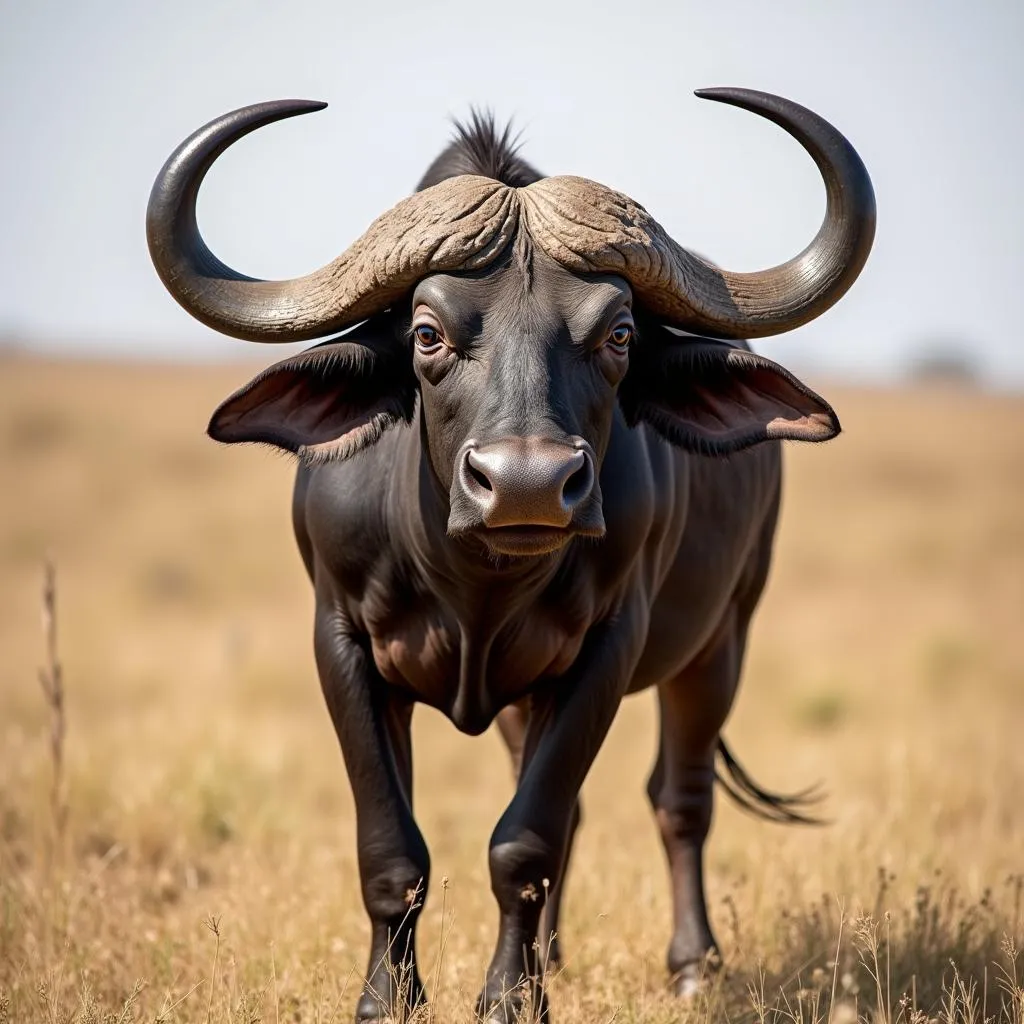 African Buffalo Bull with Large Horns on the Savanna
African Buffalo Bull with Large Horns on the Savanna
- Distinctive Horns: One of their most striking features is their large, curved horns. These horns are fused at the base, forming a formidable shield-like structure called a “boss” across the forehead, especially prominent in males. This unique feature sets them apart from other wild cattle species.
More Than Meets the Eye: Unique Adaptations
African buffaloes have evolved several adaptations that allow them to thrive in the challenging African environment.
-
Built for Heat: Their dark, almost black, hide helps them absorb heat, while their wide nostrils and large ears aid in heat dissipation, allowing them to tolerate high temperatures.
-
Grazing Giants: Their digestive systems are highly efficient, able to break down tough grasses and extract maximum nutrients, making them well-suited to their herbivorous diet.
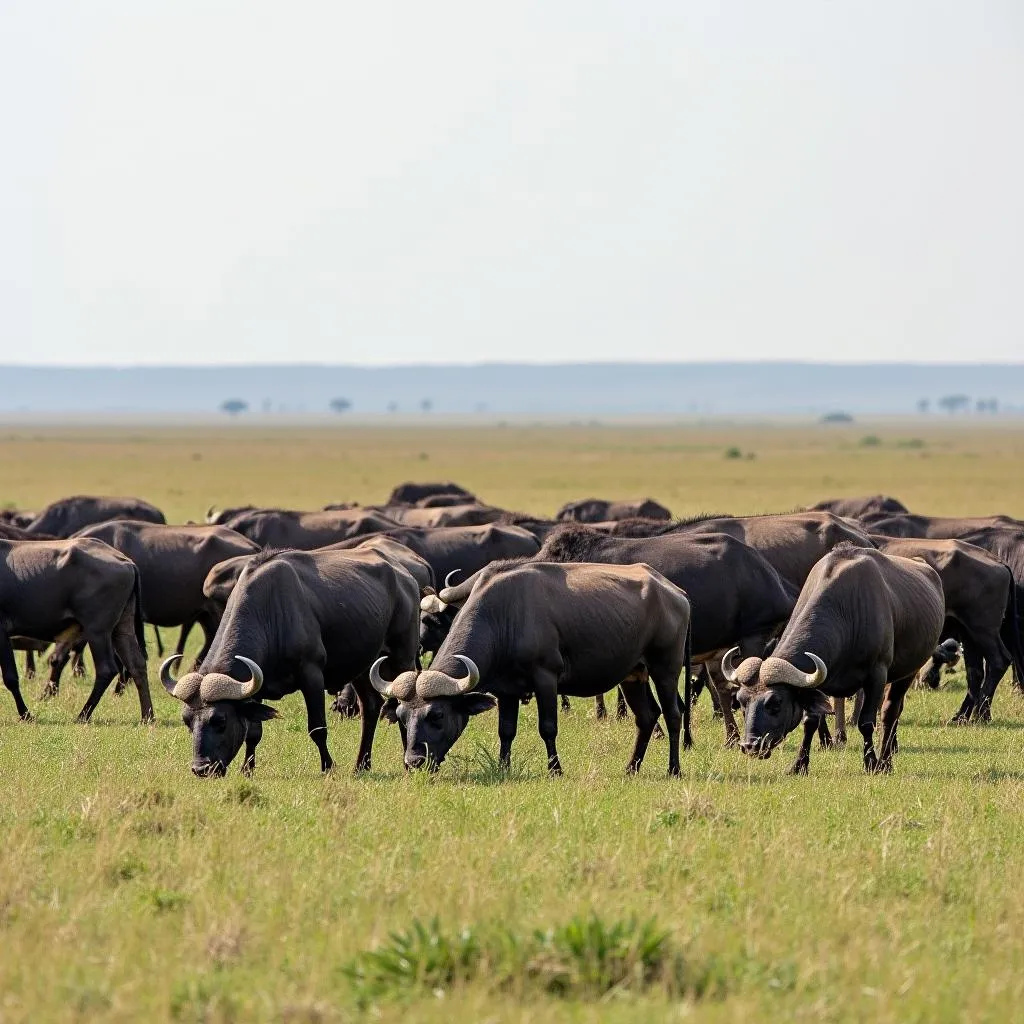 African Buffalo Herd Grazing on Open Grasslands
African Buffalo Herd Grazing on Open Grasslands
- Keen Senses: Their sharp eyesight, hearing, and sense of smell make them highly aware of their surroundings, enabling them to detect predators and other threats effectively.
Social Bonds and Hierarchy: Life in the Herd
African buffaloes are highly social animals, living in herds that can range in size from a few dozen to several hundred individuals.
-
Matriarchal Structure: Herd leadership typically falls to an older, experienced female, known as the matriarch. She guides the herd’s movements, foraging decisions, and overall behavior.
-
Strong Family Ties: Within the herd, strong family bonds exist, with mothers and calves forming particularly close relationships. Young calves stay close to their mothers for protection and learn essential survival skills.
-
Complex Communication: Buffaloes communicate through a variety of vocalizations, including grunts, snorts, and bellows. These sounds convey a range of information, from warning calls to social greetings.
Facing Predators: A Force to be Reckoned With
Despite their size and strength, African buffaloes face threats from predators like lions, crocodiles, and spotted hyenas, especially targeting young or vulnerable individuals.
- Collective Defense: When faced with danger, the herd forms a protective circle around the calves, with the strongest bulls positioned on the outer rim, ready to defend the group.
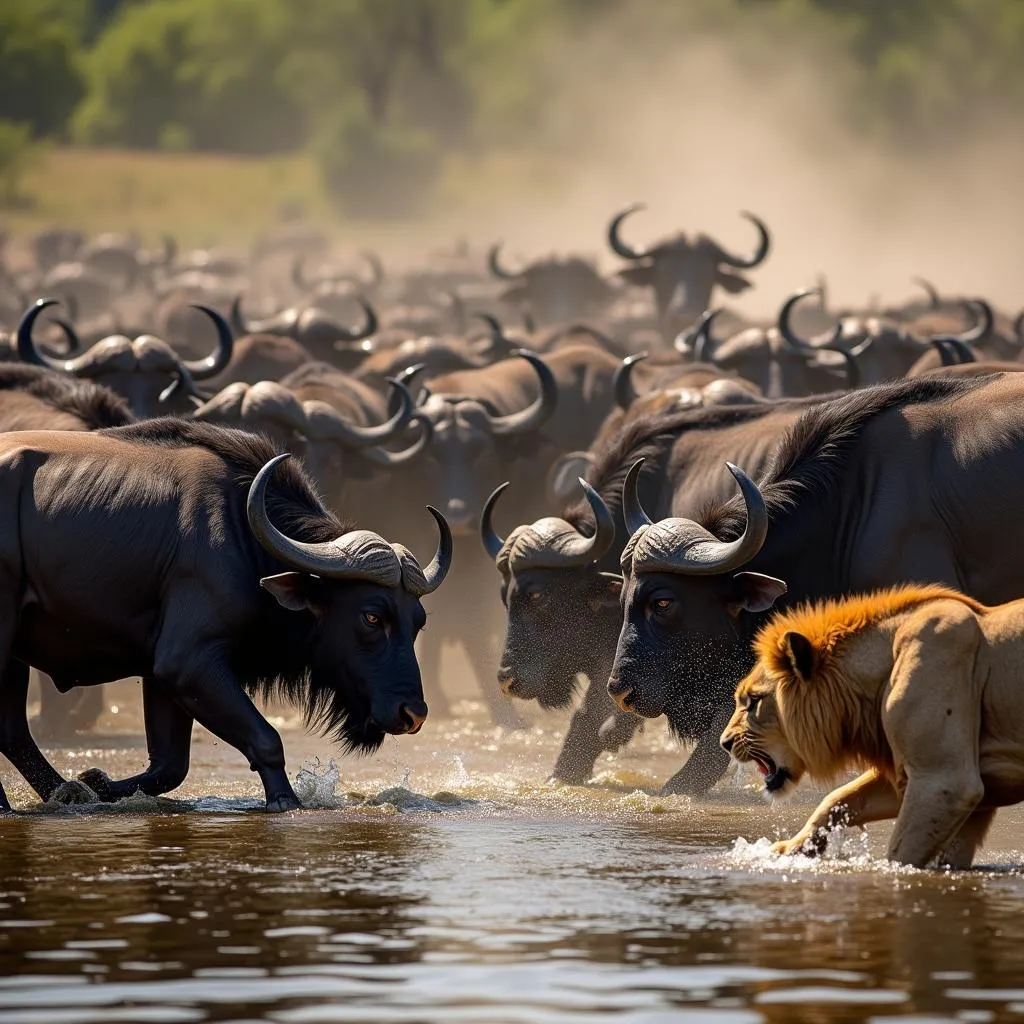 African Buffalo Herd Defending Against Lions at a Waterhole
African Buffalo Herd Defending Against Lions at a Waterhole
- Fearsome Reputation: Their aggressive nature and powerful horns make them formidable opponents, often deterring even the most determined predators. They are known for their “buffalo stare” – a direct and unwavering gaze used to intimidate rivals or threats.
The ‘Black Death’: Power and Respect
African buffaloes have earned the nickname “The Black Death” due to their unpredictable nature and the potential danger they pose to humans and animals alike.
-
Unpredictable Temperament: While generally peaceful grazers, they can be unpredictable and aggressive if threatened or startled.
-
Significant Impact: Their movements and grazing habits significantly impact vegetation patterns, influencing the overall ecology of the African savanna.
-
Conservation Status: Currently listed as “Least Concern” by the IUCN, their populations are generally stable. However, habitat loss, hunting, and disease outbreaks remain potential threats.
FAQs About African Buffaloes
1. What is the difference between an African buffalo and a bison?
While they share a similar appearance, African buffaloes and American bison are distinct species. Bison have a larger hump, shaggier fur, and different horn shapes.
2. Are African buffaloes dangerous to humans?
Yes, African buffaloes are considered one of the most dangerous animals in Africa. They are known for their unpredictable temperament and have been responsible for more injuries and fatalities to humans than lions.
3. Do African buffaloes have any natural predators?
Lions, spotted hyenas, and Nile crocodiles are the primary predators of African buffaloes, typically targeting calves or weak individuals.
4. What is the average lifespan of an African buffalo?
In the wild, African buffaloes can live up to 15-20 years.
5. What is the role of an African buffalo in the ecosystem?
As large herbivores, African buffaloes play a crucial role in shaping the savanna ecosystem. Their grazing habits influence vegetation growth and their dung provides nutrients to the soil.
6. Where can I see African buffaloes in the wild?
National parks and reserves across sub-Saharan Africa, such as the Serengeti, Kruger National Park, and Chobe National Park, offer excellent opportunities to observe these magnificent creatures in their natural habitat.
Discover More About the African Wilderness
Interested in learning more about the diverse wildlife and cultures of Africa? Explore these captivating articles:
From their impressive physical characteristics to their complex social structures and ecological importance, African buffaloes are a testament to the wonders of African wildlife. Understanding these fascinating creatures enhances our appreciation for the intricate web of life on the savanna.
For inquiries and support, reach us at +255768904061, kaka.mag@gmail.com, or visit us at Mbarali DC Mawindi, Kangaga, Tanzania. Our dedicated customer service team is available 24/7.
